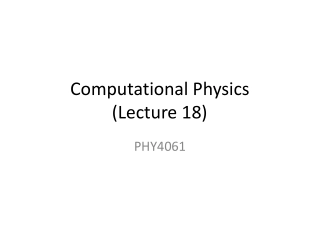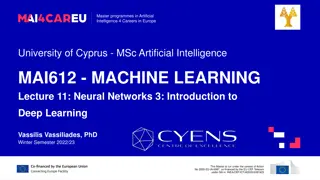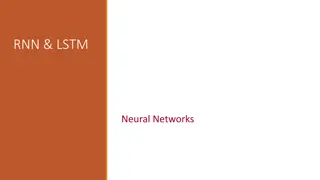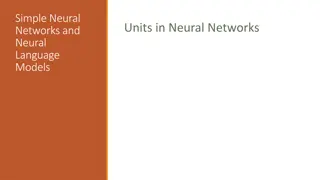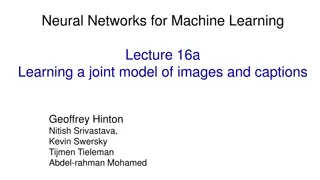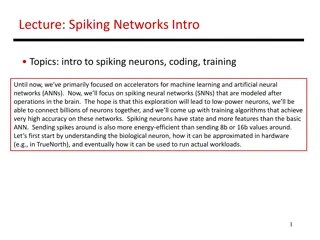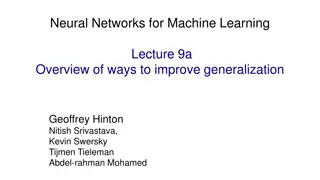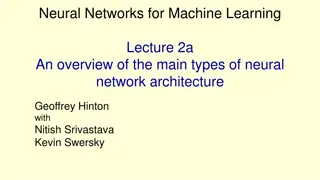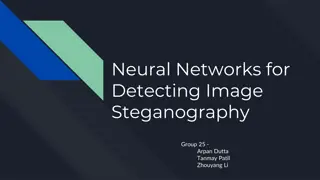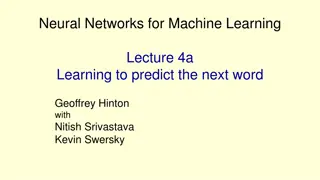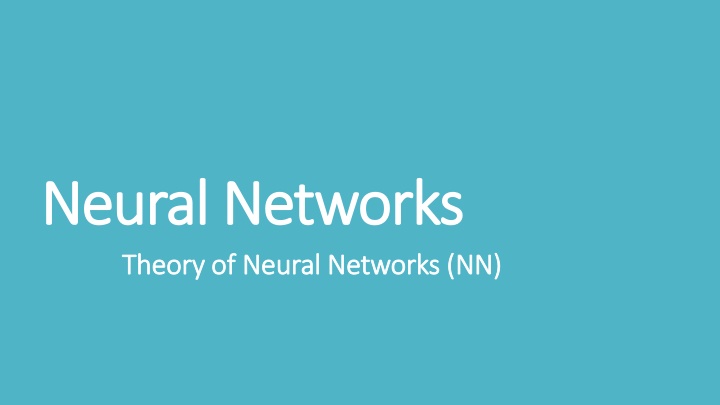
Neural Networks: Theory, Architecture, and Applications
Neural networks, inspired by the complexity of the human brain, are computational models that aim to replicate brain functionality in a simplified manner. This article explores the theory behind neural networks, comparing biological neural networks with artificial neural networks (ANN). It delves into the structure of these networks, the functioning of neurons, synaptic strength, and the training algorithms used in artificial neural networks. By understanding the architecture and principles of neural networks, we gain insights into their potential applications in various fields such as machine learning and artificial intelligence.
Download Presentation

Please find below an Image/Link to download the presentation.
The content on the website is provided AS IS for your information and personal use only. It may not be sold, licensed, or shared on other websites without obtaining consent from the author. If you encounter any issues during the download, it is possible that the publisher has removed the file from their server.
You are allowed to download the files provided on this website for personal or commercial use, subject to the condition that they are used lawfully. All files are the property of their respective owners.
The content on the website is provided AS IS for your information and personal use only. It may not be sold, licensed, or shared on other websites without obtaining consent from the author.
E N D
Presentation Transcript
Neural Networks Neural Networks Theory of Neural Networks ( Theory of Neural Networks (NN) NN)
Theory of Neural Networks ( Theory of Neural Networks (NN) NN) Human brain is the most complicated computing device known to a human being. The capability of thinking, remembering, and problem solving of the brain has inspired many scientists to model its operations. Neural network is an attempt to model the functionality of the brain in a simplified manner. These models attempt to achieve "good" performance via dense interconnections of simple computational elements. The term (ANN) and the connection of its models are typically used to distinguish them from biological network of neurons of living organism which can be represented systematically as shown in figure below: -
Nucleus is a simple processing unit which receives and combines signals from many other neurons through input paths called dendrites if the combined signal is strong enough, it activates the firing of neuron which produces an o/p signal. The path of the o/p signal is called the axon, synapse is the junction between the (axon) of the neuron and the dendrites of the other neurons. The transmission across this junction is chemical in nature and the amount of signal transferred depends on the synaptic strength of the junction. This synoptic strength is modified when the brain is learning. Weights (ANN) synaptic strength (biological Networks)
Artificial Neural Networks ( Artificial Neural Networks (ANN) ANN) An artificial neural network is an information processing system that has certain performance characters in common with biological neural networks. Artificial neural networks have been developed as generalizations of mathematical models of human cognition or neural biology, based on the assumptions that: - 1-Information processing occurs at many simple elements called neurons. 2-Signals are passed between neurons over connection links. 3-Each connection link has an associated weight which, in a typical neural net, multiplies the signal transmitted. 4-Each neuron applies an action function (usually nonlinear) to its net input (sum of weighted input signals) to determine its output signal.
A Neural network is characterized by: 1-Architecture: - its pattern of connections between the neurons. 2-Training Learning Algorithm: - its method of determining the weights on the connections. 3- Activation function.

